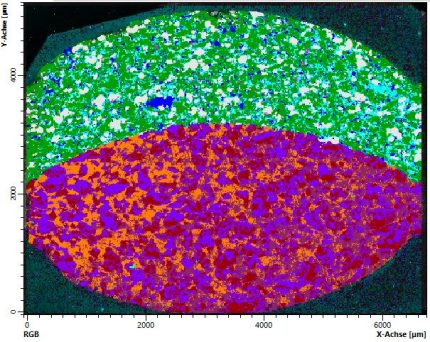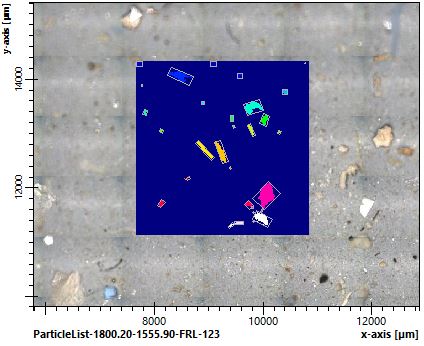In this article we want to talk about the latest OPUS release. Actually, many of our customers are not aware that each release also contains brand new core features. Today we want to have a look at the major microscopy functions, that have been added in OPUS 8.7.
Before we get into the list of new features, know that Bruker is working hard on autonomous analysis mechanisms. Our vision is to completely relieve the user of tedious work-steps, and to perform basic evlaution transparently and autonomously. This should help the user with one thing above all: to concentrate on the results.
New Feature: Adaptive Chemical Imaging
TL;DR: Adaptive Chemical Imaging (ACI) analyzes large data sets at the push of a button, based on the spectral variances of the collected data.

This new function is the logical next development step for our well known cluster analysis function. Its new algorithm evaluates your imaging or mapping results autonomously by the determination of spectral variances. This way, a time-consuming search for existing chemical classes is avoided.
Now you can watch the algorithm predict the sample’s chemical classes without manual input or supervision. By doing so, it allows chemical mapping and distribution analysis of unknown samples or small structures in mere minutes.
New Feature: Cluster ID for IR Images
TL;DR: Automatically detects and identify clusters of the same spectral origin within chemical images fully automatically, e.g. particles.

The Cluster ID feature provides easy determination of the chemical identity of classified sample components. It is applied in the analysis of particles, layers in laminates, the constituents of pharmaceutical tablets and other inhomogeneous materials.
It reliably generates comprehensive statistical reports on the quantity, size and, of course, identity of all analyzed structures. This takes analysis of particles or technical cleanliness to a new, autonomous level.
Compatible to All IR and Raman Microscopes
- LUMOS II FT-IR Microscope
- HYPERION II FT-IR QCL Microscope
- SENTERRA II Raman Microscope
- RamanScope FT-Raman Microscope
Obviously there are many other new functions, features and patches. As always, you can find our complete release-notes on our homepage:
OPUS Latest Release Notes.








